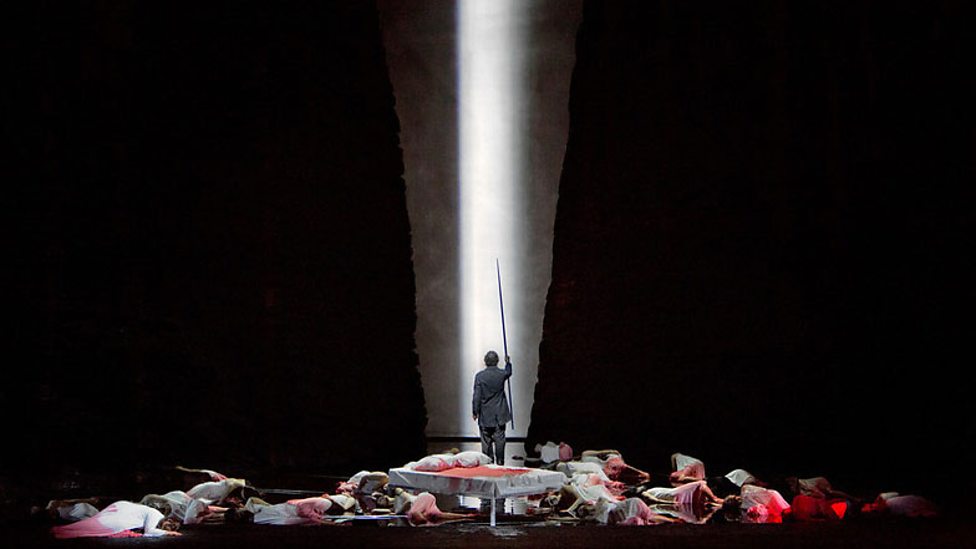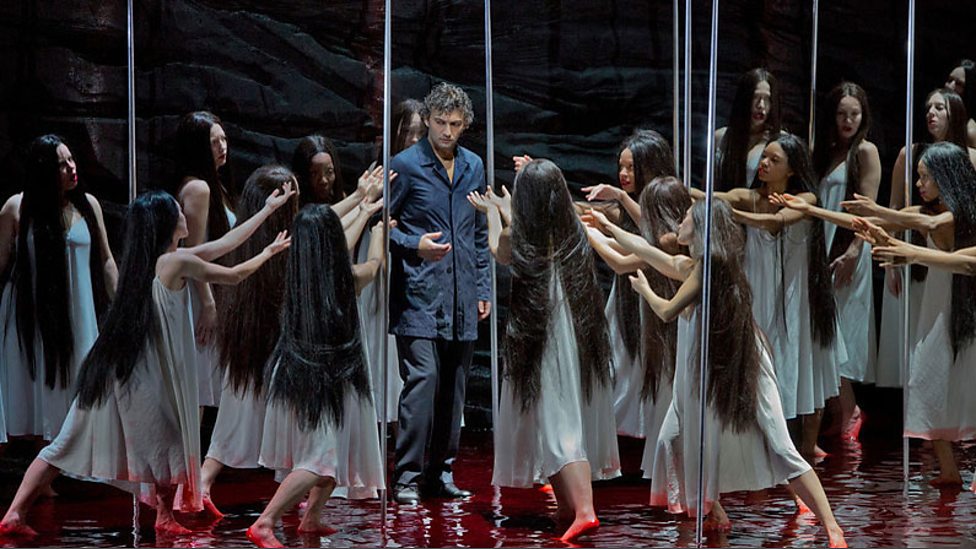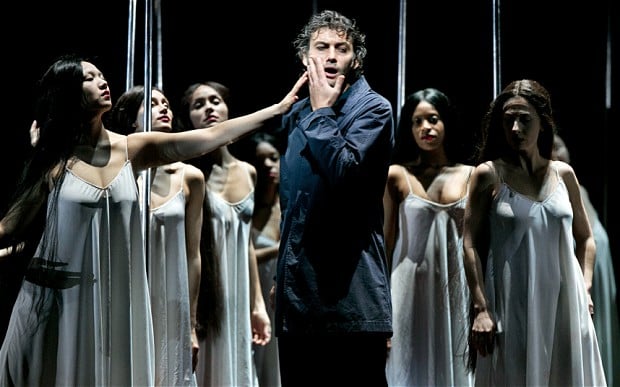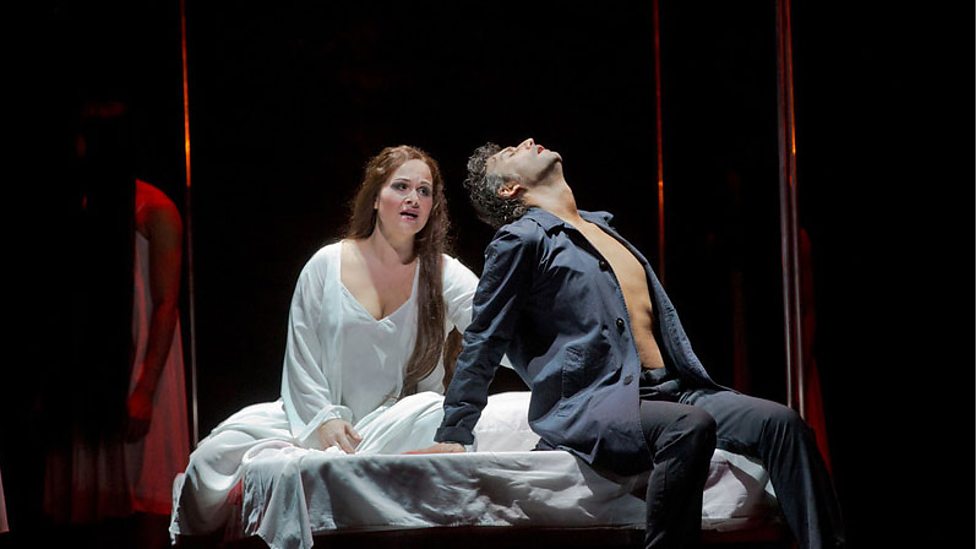The awesome decoration is prepared by Metropolitan Opera for Wagner’s “Parsifal”. What will spectator expect from an eccentrical performance? Ocean of blood. “The overall staging didn’t glue until we started playing with blood, because that is ultimately the voltage of the piece,” said Mr. François Girard, director of this show.

The stage blood — made from a recipe that includes tap water, glycerin, and red and blue dye, mixed to taste — is created in Brooklyn by a company J&M Special Effects, which heats and trucks it to the Met in 250-gallon rectangular tanks before each performance.
The blood is kept warm in the tanks, which are swaddled in industrial-grade heating blankets until the last possible moment. At eight minutes before the curtain went up at a recent rehearsal, Terry Ganley, a stage manager, gave the cue. “Fill ’er up,” she told a team of stagehands, many of whom wore rubber boots. The blood flowed.

Keeping things neat and safe with over 1,000 gallons of fake blood sloshing around is not easy. An overflow trough sits behind the pool. Rows of chairs with towels and sandals are placed for the performers coming off the bloody stage, and absorbent mats and brown paper are taped along the path to their dressing rooms. Members of the stage crew are posted beneath the stage to make sure no blood seeps into the Met’s underground storage areas, where sets for operas like “L’Elisir d’Amore” and “Pagliacci” are currently stored.
The Met isn’t trying to create a slasher  opera. “Parsifal” is Wagner’s metaphysical meditation on the knights of the Holy Grail, the goblet supposedly used at the Last Supper and which later caught Jesus’s blood on the cross. Their leader, Amfortas, suffers from a mysterious wound that will not heal. In Mr. Girard’s poetic 2013 production, blood is a central visual element.
opera. “Parsifal” is Wagner’s metaphysical meditation on the knights of the Holy Grail, the goblet supposedly used at the Last Supper and which later caught Jesus’s blood on the cross. Their leader, Amfortas, suffers from a mysterious wound that will not heal. In Mr. Girard’s poetic 2013 production, blood is a central visual element.
“We’re talking about life, Christ, Amfortas’s wound, sexuality, all of those things,” added Mr. Girard. “Blood became the connector.”

Critics about Girard’s performance?
“The production isn’t for everybody, but so handsomely filled this five-hour-plus opera that I was quite taken in at the Feb. 18 performance. Amid the meticulously-composed, highly-stylized stage pictures (suggesting Wieland Wagner’s famously spare, 1950s productions) was a partly-cloudy sky, its weather changes commenting on the action in this slow-moving opera. Klingsor’s flower maidens are more like warriors, simultaneously flipping their black, waist-length hair back and forth, alternately suggesting their triumph or demise. But what about Wagner’s stage directions? That battle was lost years ago, and I’d much rather see gently provocative symbols than a bunch knight costumes.”
Review by David Patrick Stearns (Feb. 19, 2013).
UsaARTnewS to offer you the pompous stage, production by Mr. Girard (You can appreciate work of director through watching his movies Thirty Two Short Films About Glenn Gould (1993), Silk (2007) or Boychoir (2014)) and stunning voices of singers. Is It probably we need Wagner of new interpretation?























